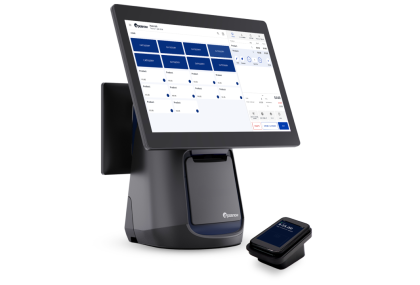What are the Average Grocery Store Profit Margins?
A lot of people think that businesses need to operate with high profit margins in order to be successful. The truth is, a lot of companies can sustain business, and even thrive with fairly low profit margins.
Having low profit margins doesn’t necessarily mean a business isn’t earning good revenue. As you can probably gather from the size and profits of some of the biggest grocers in the world, grocery stores can be very profitable[1].
Here are the average profit margins for grocery stores.
What is a profit margin?
Let’s start with the basics: a profit margin, in its most basic sense, is how much more a company receives from selling a product than it spent delivering the product. The cost of delivering a product can include the cost of many things, such as labour, rent, production, materials, overheads, and more. The price of the product contains within it the cost of what it took to bring to market.
In order for a company to make a profit on that product, they need to sell it for more than it cost to bring it to market. How much more you sell it for will determine the size of the profit margin. If it costs you $1.00 to bring an apple to market and you sell it for $1.01, you still make money by selling the apple, but you’re running an extremely slim profit margin.
There are a few different types of profit margin:
- Gross profit: Gross profit is the profit a company makes after deducting the costs associated with making and selling its products.
- Operating profit: Operating profit is its total earnings from its core business functions for a given period, excluding the deduction of interest and taxes.
- Pre-tax profit: Pre-tax profit is any and all profit you make by selling a product before taxes are deducted.
- Net profit: The average net profit margin, or simply net margin, measures how much net income or profit is generated as a percentage of revenue.
Profit margins should not be confused with the markup. A markup is an amount a company decides to raise the price of a product to increase profit. A margin is how much each sale can be determined as profit.
Retailers everywhere are boosting trade by using more and more complicated technology. Epos Now’s user-friendly systems combine the latest software programs with simple, speedy interface to help businesses sell more, access markets, and run their operations seamlessly and securely:
- Streamline the sales process with flexible transaction software
- Know your business better with hundreds of detailed reports
- Access every market with online integrations and hundreds of retail apps
- Control operations using cloud technology to access office information anywhere

Why are grocery store profit margins low?
Grocery stores make money by selling products, including food, drinks, household items, and more but most don’t make a lot of profit on each individual item. One reason why grocery stores have such low profit margins is because of competition.
Grocery stores are one of the most ubiquitous types of retail operations there are. They meet a very basic human need - the need to eat - and so will always be in demand. This demand will inevitably be met by lots of companies. When there’s lots of competition, prices are pushed down as a way to attract customers to individual brands.
On average, grocery stores make about 2.2% profit on each product they sell which isn’t a lot of profit, so how are they able to operate?[2]
Most grocery store chains are large businesses with dozens, hundreds, or thousands of locations. These companies are able to operate and sell at scale, which means operating, administration, and labour costs are lower, allowing them to pass those savings onto their customers in the forms of cheap goods. This suits the shopping experience of a grocery store well since most people who shop in places like ALDI or Wal-Mart buy large amounts of food all at once.
With all that being said, not all grocery stores have low profit margins. Some organic and natural food markets have fairly high profit margins[3]. These margins can be similar for smaller grocery stores that offer fresh, organic produce. On the other hand, some grocery stores are able to operate on very low profit margins and still be successful[4].
With the internet, many companies are able to deliver food to customers in the comfort of their own homes without having to visit a store. This is making providing consumers and businesses with an alternative way to buy and sell groceries and is changing the grocery retail industry radically. Online grocery stores have become just as profitable, if not more so, than their in-store counterparts while and businesses like HelloFresh are delivering recipes with ingredients, pioneering alternative methods[5][6].
According to new research from Atrato Capital, the online grocery order volumes as a result of the pandemic has allowed grocery stores to turn a profit[7]. Until now the costs collected for online grocery delivery seldom covered the actual cost of picking, packing and delivering goods.
But all that has changed as many supermarkets have been able to improve efficiency in their delivery services to bring costs down. This, along with the popularity of click and collect services, allowed many grocery stores to turn big profits for the first time during the pandemic.

How to calculate your grocery store’s profit margins
Calculating the average profit for a grocery store business is the same as calculating it for any other business. Calculating your business’s profit margin will give you an insight into how your business is faring and what you can do to change if you need to.
You can calculate a net profit margin for your business like this:
(Total Sales – COGS – Business Expenses) / Total Sales
Let’s say your sales are $250,000, your cost of goods sold is $125,000 and your total business expenses are $125,000. In this instance, you’d break even—and your net profit margin would be 0.
This doesn’t necessarily mean that your business is doing badly, though. Knowing the details of your net profit margin can help you understand what you can do to improve it.
In this particular instance, you might choose to bring the cost of your COGS down. This could mean striking better deals with your suppliers, finding new ones, cutting down on overheads, and more. The bottom line is that if you reduce your COGS from $250,000 to $150,000, that’s $100,000 of profit.
Get started calculating your profit margins
When you run a grocery store, you need the best technology on the market to make your business as efficient as possible. Essential in any grocery store operation is the point of sale system, where customers make their purchases. But a point of sale system doesn’t have to be just a till: it can be the place from which you can calculate the very financial health of your business.
With an Epos Now POS system, you can calculate your profit margin from any of your tills. You can also use our systems to do any number of tasks, from bookkeeping and stock control to customer account management and discount management.
- Track single item performance so you can accurately forecast and understand business operations through hundreds of detailed reports
- Receive stock alerts so you never miss a selling opportunity
- Easily add, edit and bundle items to create new revenue opportunities
- Create automatic purchase orders so you never run out of stock
- Full barcode management with easy import, update and management functionality on up to tens of thousands of products
- Customize your reports to see what matters to you
- Access reports and data from anywhere using cloud technology
- Track sales, profit, and trends in real-time to understand more about your business
- Identify your top-performing products and staff members
- Integrate with Xero, or Sage and take the headache out of accounting
Find out more online about Epos Now solutions or submit your data below to be contacted by one of our experts.




